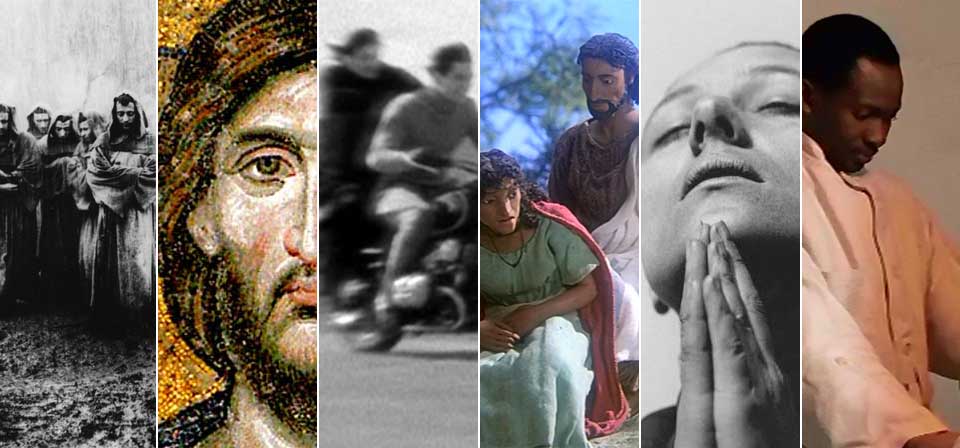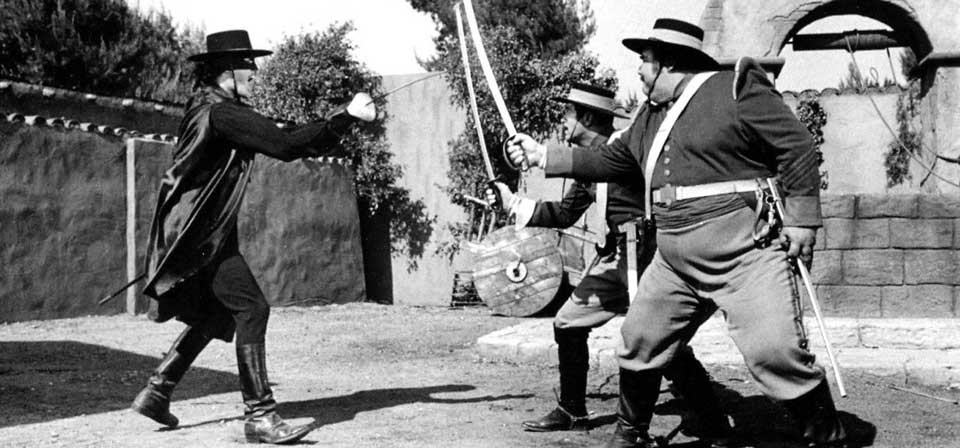Blog
Coming at You: More 3D, Fairy-tale Revisionism
It’s a straw in the wind: As the recently restored 1939 classic The Wizard of Oz comes out on Blu-ray today, Warner Bros is giving renewed attention to a pair of new Oz projects in early development, now likelier than ever to come to fruition. The reason: Tim Burton’s Alice in Wonderland.
Green Zone: “Kinnear Lied, People Died”
In my last post on Green Zone, I wrote that while I was reasonably pleased with my review, I was sure that “if I were a savvier political thinker it would be a better review.” Now, posting at Arts & Faith, Peter Chattaway has thoughts that would never have occurred to me, darn it.
Green Zone and Torture
Regular readers know that I usually steer clear of politically themed movies. I’m the same in real life; political discussions usually shut me down, simply because I feel I have nothing to say, and on the rare occasions that I do I often wind up regretting it.
Katyn: Poland’s Dark Night
Exactly 70 years ago today, on March 5, 1940, Josef Stalin and the entire Soviet Politburo signed an order to massacre tens of thousands of Polish prisoners of war: officers, mostly reservists; doctors, academics, civil servants, clergymen of all faiths—the cream of the Polish intelligentsia.
The 2010 Arts & Faith Top 100
“Read not the Times, read the eternities,” Thoreau advised. The 2010 Arts & Faith Top 100 Films, just released days ahead of the Academy Awards, won’t make the headlines of the Times — but if you prefer to scrutinize the eternities, you might want to skip the Oscars and check out the Arts & Faith Top 100.
Miyazaki Week at Decent Films!
Marking this week’s DVD release of Hayao Miyazaki’s Ponyo — as well as new special editions of three of Miyazaki’s most family-friendly films, My Neighbor Totoro, Kiki’s Delivery Service and Castle in the Sky), I’ve posted a new article on “The Worlds of Hayao Miyazaki,” written for this month’s issue of Catholic World Report.
Bible Films Blog: Color and Symbolism in Bible Films
My friend Matt Page, who blogs Bible Films Blog, has just written an interesting post on color and color symbolism in Bible films.
2009: Year of Onscreen & Offscreen Infidelity?
A recent story in Variety connects the dots around various real-life and large- and small-screen stories and comes up with a disturbing picture: One way or another, 2009 was a high-profile year for adultery.
The Return of Decent Films Mail
Too long neglected, Decent Films Mail returns today with two new columns, Mailbag #16 and Mailbag #17. (For the benefit of RSS subscribers, at this writing it looks like the RSS feed hasn’t yet picked up on them. This looks like a glitch; I’ll look into it.)
Best films of 2009: More lists
A few weeks ago the National Catholic Register ran my 2009 year-end piece with my lists of “top ten” and runner-up films. (An expanded version of the article appeared at Decent Films.) This week, I’d like to catch up with a few other lists from Christian sources worth noting.
More on Lenten Viewing
My Lenten viewing suggestions prompted a reader to ask: “Would you consider supplementing an English-only list? I love the idea of a Lenten movie night, but I have several children under reading age, and my husband just dislikes reading his movies. LOL. I will have to carve out time on my own during the week to watch the intriguing foreign films you have included.”
Live Near Phoenix, Arizona?
If so, check out the Emeth Society, billed as “A Book and Film Society Promoting Catholic Culture in the Diocese of Phoenix.” And if you don’t live near Phoenix, check out their website anyway, and ask yourself, “How can I get something like this going in my diocese?”

Into the Desert: Lent and Film
Many Catholics observe Lent with a discipline of withdrawal, in whole or in part, from mass communications media: movies, television, Internet, radio, music, newspapers. This is an admirable discipline … I find it helpful to make a practice of spiritual viewing during Lent, just as many make a practice of spiritual reading. For those inclined to consider this practice, here are six film suggestions for the six weeks of Lent.
A Brief Note on Horror
This weekend, the release of The Wolfman made me think of highlighting my 2003 essay on horror and the macabre, originally written for the re-release of Ridley Scott’s Alien. At first I thought I would take the occasion to make a few cosmetic changes, but as I began pulling threads here and there, I kept thinking of ways to improve the piece, until I wound up doing quite a bit more work expanding the piece than I originally intended. (The story of my life…)
Date Correction: CA Live Thursday, Not Friday!
Last week I blogged about my upcoming Catholic Answers Live appearance — but I wrote the wrong day. It’s Thursday, 2/11, not Friday, 2/12, from 7pm–8pm EST / 4pm–5pm PST. Sorry for the confusion!
Ridley Scott’s Robin Hood and Hollywood Revisionism
The last really solid Hollywood take on the traditional Robin Hood mythos (not counting the Kevin Costner folly, because, well, it doesn’t count) was over 70 years ago, and is essentially the only one in its class (unless you want to go back to the silent era). A revisionist take on Robin Hood would be one thing if the traditionally heroic Robin Hood could be taken for granted as a cultural reference point. What have we come to if we can only view a legendary icon like Robin Hood through skeptical, revisionist lenses?
Legion: Peter Chattaway Speaks
Regular readers know that one of the critical voices I cite most often is my friend Peter T. Chattaway. For a ripping example of why Peter is so quotable, check out his brilliant blog post on Legion, now in theaters.
The 2010 Academy Award Nominations
Last year’s Academy Awards were not the least-watched Oscars in history—that was the previous year—but they were widely perceived as contributing to the ongoing apathy of viewers by snubbing popular and critical favorites like The Dark Knight and WALL-E while honoring a roster of films (Benjamin Button, Frost/Nixon, The Reader, Milk, Doubt) aptly characterized by A. O. Scott’s phrase “hermetically sealed melodrama[s] of received thinking.” (By contrast, Scott called The Dark Knight and WALL-E “contrasting allegories pitched at the anxieties of the moment,” “populist entertainments of summertime” that incited the “interesting movie debates of 2008.”)

The fox so cunning and free: Walt Disney’s “Zorro”
Silent star Douglas Fairbanks, Sr. is still the silver screen’s ultimate swashbuckling Zorro. Tyrone Powers ideally embodies the sly subterfuge of a man of iron turning on a dime from foppish languor to finely double-edged banter to masked derring-do. But Guy Williams, hero of Walt Disney’s popular 1950s television series, is the most beloved Zorro of all time.
Roberto Rossellini’s War Trilogy
A Vatican list film, Rossellini’s celebrated 1945 landmark of Italian neorealism [Open City] is a must-see film for film lovers — and of course I saw it, and reviewed it, years ago. Even at the time, though, I knew I wasn’t really experiencing the film Rossellini made.
Recent
- Are there too many Jesus movies?
- Antidote to the digital revolution: Carlo Acutis: Roadmap to Reality
- “Not I, But God”: Interview with Carlo Acutis: Roadmap to Reality director Tim Moriarty
- Gunn’s Superman is silly and sincere, and that’s good. It could be smarter.
- Elio is a space adventure that Toy Story’s Andy would actually enjoy
Home Video
Copyright © 2000– Steven D. Greydanus. All rights reserved.